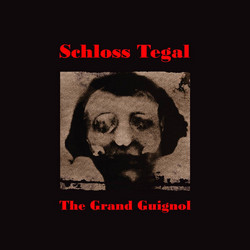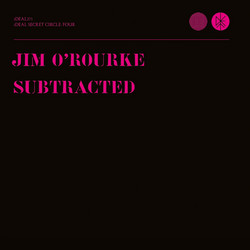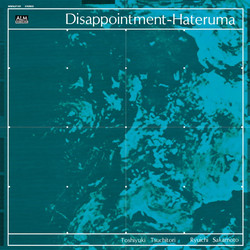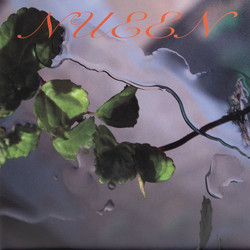We do require your explicit consent to save your cart and browsing history between visits. Read about cookies we use here.
Lou Reed
Metal Machine Music (DVD Audio)
*2023 stock* Lou Reed's Metal Machine Trio/Re-Mastered to the specifications of the original master, playable on home theatre systems. Lou Reed has gone back to the original multi-tracks and has digitally re-mastered his 1975 classic album "Metal Machine Music." This is the one and only official re-mastered edition of "Metal Machine Music", re-issued, supervised and approved by Lou Reed himself. The re-mastered edition is released on Reed's very own Sister Ray label in three formats - double gatefold vinyl (in quadraphonic sound), Audio DVD and Blu-ray.
This audio DVD contains both discrete 4-channel and stereo audio reproductions of the original quadraphonic master, playable on home theatre systems. Includes the looped lock groove audio at the end as on the original vinyl release. The disc is audio video only and is formatted for all regions. About Metal Machine Music: Re-mastered - The original. The one that started it all. Noise Rock - Industrial Rock. Underground for years, it survived on the power of an idea. No key, no vocals, no set rhythm. Hhhmmmmm feedback forever. Supervised by Lou Reed and faithfully re-mastered to the last squeal.
Says Reed, "The out of print "Quad" has been replicated for all formats including a perfect vinyl version playable on your stereo turntable with the original rear sections moved to the centre of the front left/right speakers. It's worth getting a turntable to hear this. I myself bought a Linn to calibrate this great sound and am playing it through Wilson Watts and Puppies. Hear it as we did on Scott Hull's Duntechs." "We worked from digital transfers (95k 24bit) made from the original analogue masters. The original label supplied us with these files and photo copies of the analogue reels including copies of Bob Ludwig's original mastering notes." An act of love for an act of sound.
It’s all there in the first minute: there’s a low-mid whoosh that’s clearly guitar feedback, like a Jimi Hendrix power chord trailing off; there’s a bit of an electric rattle, perhaps a fluttering speaker cone gasping for air; then come the high-pitched screeches, perhaps bringing to mind a grainy video image of seagulls circling over an open sea filled with radioactive garbage. From there, a ringing squall is folded in, an unstable mess of harmonics that shudders and quakes like nerve impulses curling down a human spine. And with that, we’re deep into Lou Reed’s Metal Machine Music. For a good 15 years after its 1975 release, Metal Machine Music, a double album of avant-garde noise put out by a rock legend who was only starting to get his commercial due, was discussed as a gesture more than as music. Explanations for its existence proliferated. Some said it was Lou Reed’s attempt to get out of a record contract, or a fuck-you to fans who only wanted to hear his most popular songs. Or it was mis-packaged, maybe, and was originally supposed to come out on a classical label, where there was some precedence for this kind of experiment. And some of these rumors about Metal Machine Music’s troubled release were started, or at least encouraged, by Reed himself. Reed put out MMM at a precarious moment in his career, with VU firmly in the rearview but his own commercial prospects unclear. His 1972 debut solo album made almost no impact, but the David Bowie-produced Transformer fared much better with the rise of glam rock and the commercial success of the single “Walk on the Wild Side.” Though Reed followed that album with a poorly received commercial bomb (1973’s Berlin, now considered a theatrical rock classic), his profile in the rock world continued to climb through ’74 and ’75, and his past suddenly had currency. The Velvet Underground vault recording 1969 Velvet Underground Live with Lou Reed appeared in 1974, and the successful live solo album from earlier the same year, Rock ‘n’ Roll Animal, was heavy on glammed-up versions of VU songs. Sally Can’t Dance wasn’t one of Reed’s better albums, but the title song got some FM radio play, and the LP hit the Top 10. Given his dicey commercial prospects at the beginning of the decade, Reed could, by mid–1975, be called a successful rock star. Which explains why his next choice was so baffling. Trending Now Beck’s Midnite Vultures (in 4 Minutes) | Liner Notes Metal Machine Music is shrouded in mystery in part because Lou Reed made it alone. The nature of the music didn’t require a studio or an engineer, so he recorded it by himself at his Manhattan loft, working late into the night. Though he put a long series of instruments, filters, and technical specifications on the back cover of the record (“Ring Modulator/Octave Relay Jump”; “Distortion 0.02 bass and treble ceilings”), little or none of it had anything to do with the recording. The notes were a prank. The actual recording involved just a couple of amps and guitars with open tunings leaning against them, a few microphones, and a tape machine. When an amp is turned up, the vibration of the sound will stimulate the strings and pickups of a nearby guitar, generating what we all recognize as feedback. The harmonic information of the feedback will have a particular quality that varies along with the tunings, and with two guitars occupying the same space, the interactions between the instruments can create additional harmonics. Reed experimented with settings and guitar placements and then mixed the results into four separate 16-minute pieces, each of which has completely different information happening in each stereo channel. Reed’s state of mind and thought process during the recording are not known, since there was no one else around during the recording and Reed himself, addled by chronic abuse of methamphetamine, served as an unreliable narrator (in his biography Lou Reed: A Life, Anthony DeCurtis called MMM a “hymn to speed”). All of which left an opening for stories to proliferate. In Victor Bockris’ book Transformer, Reed is quoted as saying “I put out Metal Machine Music precisely to put a stop to all of it. It was a giant fuck-you. I wanted to clear the air and get rid of all those fucking assholes who show up and yell ‘Vicious’ and ‘Walk on the Wild Side.’” But Reed’s “fuck-you” was more of a defense mechanism. He clearly knew the album would cause a ruckus and some of his actions were antagonistic provocations, such as the legendary liner notes, alternately boastful and incoherent, where he says, “Most of you won’t like this, and I don’t blame you at all. It’s not meant for you.” But deep down, in the heart he protected at all costs and showed to the world only when he was ready, he adored this music. Metal Machine Music was, for him, a perfect recording, taking his love of noise and drone and musical chaos to its logical endpoint. In 2007, Reed told Pitchfork, “The myth is sort of better than the truth. The myth is that I made it to get out of a recording contract. OK, but the truth is that I wouldn’t do that, because I wouldn’t want you to buy a record that I didn’t really like, that I was just trying to do a legal thing with. I wouldn’t do something like that. The truth is that I really, really, really loved it.” During the mid–1970s, Reed famously sparred in print with Lester Bangs, a Velvet Underground superfan who thought Reed was wasting his talent with his new music and was perfectly willing to tell him so to his face. Reed v. Bangs was the Fischer v. Spassky of the rock press’ golden era, two masters in their respective fields matching each other move-for-move. Two key Bangs articles capture Reed during the period. “Let Us Now Praise Famous Death Dwarves” from the March 1975 issue of Creem, is among Bangs’ most famous pieces, and finds him and Reed, both drunk and drug-addled, basically screaming at each other as Bangs tries to get behind the rock star pose. “The Greatest Album Ever Made,” in the March ’76 issue, finds Bangs grappling with Metal Machine Music. The title of Bangs’ Metal Machine Music piece is ironic, though Bangs clearly loved the music. The fact that he couches genuine appreciation in a series of jokes about the record shows that a critical language for appreciating the album didn’t exist in 1975. Even people who might have loved it (and there are very few accounts of anyone praising it at the time, other than Bangs) didn’t know how to explain why it might be good. At the time, with MMM considered only as “the new Lou Reed album,” it was met with confusion and derision. Some writers, like John Rockwell for the New York Times, took the record seriously and tried to evaluate it on its own merits, but came away puzzled. Writing in the Boston Globe, William Howard called it “An appalling rip-off.” In their year-end poll, Rolling Stone called it the “Worst Album by a Human Being.” The record initially sold about 100,000 copies, making it what has to be the best-selling noise music album of all time, but a great many of those copies were quickly returned, and the record was almost immediately removed from stores. After that initial wave of press and puzzlement, Metal Machine Music was, for many years, mostly forgotten, trotted out periodically for a “worst music of all time” list. Since it didn’t make the ’80s transition to CD (there was no reason to put it out) it was barely on the radar at all. MMM had become just part of rock lore, a record you heard about, not one you actually heard. But something started to happen to Metal Machine Music over time: a context for understanding and appreciating it began to build up around it. Sonic Youth, the unimpeachable aesthetic conscience of the ’80s, were inspired by the album (you can see the wheels turning in a photo of a rapt teenaged Thurston Moore communing with his copy). Noise was in the air. In 1991, Neil Young, also beloved by Sonic Youth, put out a live album called Arc, which consisted mostly of 35 minutes of edited feedback and noise. In 1998, Sonic Youth themselves put out an album called Silver Session (For Jason Knuth) that could be heard as a “cover” of Metal Machine Music, as it was created with a room full of amps and guitars in the throes of feedback. Extreme music from Japan, led by Masami Akita’s project Merzbow, brought harsh sounds to the CD racks, many of which sounded uncannily derived from MMM. Record collectors with turntables found used vinyl copies of MMM which had never been terribly scarce given the album’s initially huge rate of return. In 2000, Metal Machine Music was properly issued on CD, with liner notes from Rolling Stone critic David Fricke. And in the final decade of Reed’s life, he performed variations of the core idea of the record as Metal Machine Trio, and the work was scored for acoustic instruments and recorded by the experimental classical ensemble Zeitkratzer. Reed always said it would find its place, and he was right. Reed has said he made Metal Machine Music for himself, and indulgence is baked into the concept. It’s the sound of electricity falling in love with itself, utterly relentless, a blast of energy that never lets up. On a casual listen, it seems static, like it’s only doing one thing. But the album constantly changes and is never the same from one second to the next. If you hear the music as placid, which is possible at lower volumes, it’s like a waterfall, endless particles of sound-matter crashing down and never landing in the same way twice. If you hear it as violent, which is also possible, it’s like an explosion that’s constantly at the moment of its concussive peak, one that never quite completes itself. The key to understanding MMM is its physicality. Reed has underscored its connection to the body, which gives it a “functional” utility that separates it from the more cerebral end of experimental composition. He’s right that it’s best experienced on headphones, not just because of the extreme panning but because very few people have a living situation that allows them to blast an hour of noise music over speakers. To walk the streets with MMM playing loudly in your headphones is to bring focus to the present moment. You can feel your pulse quickening slightly because the noise triggers an alert in your body, but you then realize that when your nerves say “danger,” they’re not always correct. And the hormonal release that comes from experiencing noise can, if you pause to feel it, focus the mind. “It’s impossible to even think when the thing is on,” Reed said in Transformer. “It destroys you. You can’t complete a thought.” You see things and can isolate their shapes and colors while your ears are otherwise engaged in processing this overwhelming abstraction. And part of the masochistic excitement of the record when you listen to it loud is that it not only sounds like something that will damage your hearing, it’s the sound of the damage itself (warning: don't listen to it loud for long). MMM’s greatest conceptual tweak might be the fact that it both has “an ending” and never ends. After 64 minutes of punishing noise that steers clear of melody and steady rhythm, a bassy rumble enters in its final seconds that sounds almost like percussion. It’s at this instant that the album slips into the circular locked groove created by mastering engineer Bob Ludwig. That rumble, now as fixed and tight enough for a rhythm track sample, goes around and around for as long as you want it to. If you have the vinyl, you can continue to listen to MMM as long as you like, that one bit of sound spinning round and round forever, it's beautiful, and it’s been playing for about 12 minutes as I write this now.
Related products
More by Lou Reed
Recently viewed
Become a member
Join us by becoming a Soundohm member. Members receive a 10% discount and Free Shipping Worldwide, periodic special promotions and free items.
Apply hereSoundohm is an international online mailorder that maintains a large inventory of several thousands of titles, specialized in Electronic/Avantgarde music and Sound Art. In our easy-to-navigate website it is possible to find the latest editions and the reissues, highly collectible original items, and in addition rare, out-of-print and sometime impossible-to-find artists’ records, multiples and limited gallery editions. The website is designed to offer cross references and additional information on each title, as well as sound clips to appreciate the music before buying it.
Soundohm is a trademark of Nube S.r.l.







































